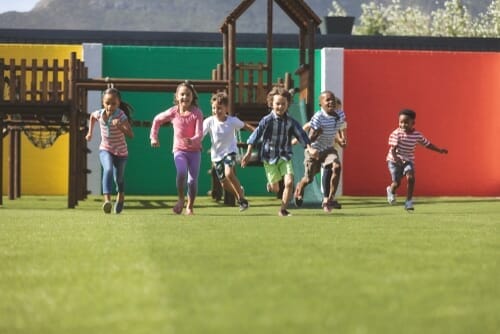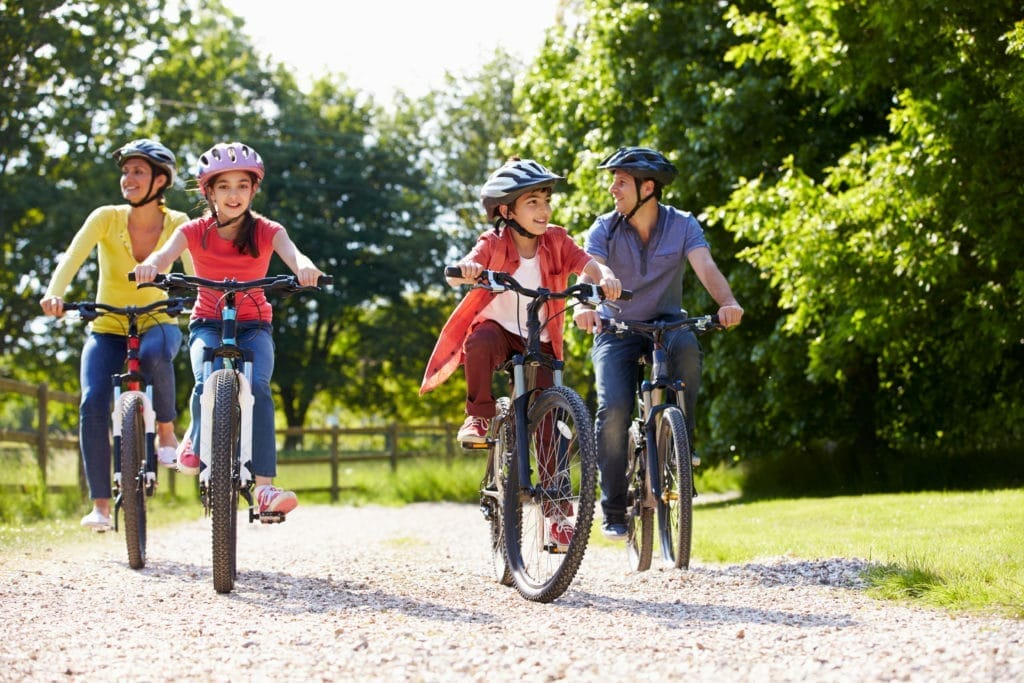In the over two years since the initial COVID-19 lockdown in America, we have seen a drastic change in our children’s mental and physical health and the way these issues are discussed. Although the effects may not be apparent, many children have been drastically affected in both the short and long term, and it will be important to help curve and prevent these issues from worsening. COVID-19 has increased awareness of health disparities and caring for personal mental health, while simultaneously increasing the level of stress, anxiety, and depression in nearly everyone.
The stresses and anxiety that we can feel as adults can be transferred in several ways to children, such as overworked teachers handling classrooms, parents struggling to keep their child healthy from COVID-19 while interacting with their friends, and the level of pressure placed on children to succeed in academics, arts, sports, etc.
Before we discuss strategies to help improve, we need to understand why this is a major problem to begin with.
Understanding the Problem
Rates of mental health disorders change with age, with depression and anxiety becoming more common as children become teenagers and young adults. Many family, community, and healthcare factors relate to mental health: boys are more likely than girls to be diagnosed with a mental, behavioral, or developmental disorder (and girls can be underdiagnosed with these disorders), 22% of children below the poverty level have a diagnosed mental, behavioral, or developmental disorder, and age and poverty level affect the likelihood of receiving treatment for these (CDC Data and Statistics). The prevalence of these struggles with mental health highlights why strategies and tools to reduce their effects are important for many children and their caretakers to possess.
The effects of the pandemic on these numbers is still being researched and understood. A survey of 1,000 parents across the USA in May 2021 on what the most unhealthy aspect of the pandemic has been was social isolation (30%), too much screen time (22%), fear of the virus (11%), and lack of physical activity (7%). This same group thought socializing (57%) and exercising (49%) were pillars of mental health that were compromised. Nearly two-thirds (64%) feel the pandemic will have a lasting effect on their child’s development (Lurie Children’s).
Mental health disorders are shown to be a prevalent part of our society, and research supports physical activity as an established, simple way to help many people overcome or live with their mental health disorders. However, physical activity in children is not being supported. In fact, physical activity like play, running, pick-up sports, and other movement-based interests can drop from 3 hours a day to less than 50 minutes a day as children grow from age 9 to 15 (NIH). Physical inactivity can lead to an energy imbalance, increased risk of obesity or type 2 diabetes, increased risk of cancer, and increased risk of low bone density and osteoporosis.
During the first year of COVID-19, physical activity decreased and screen time increased due to playmate availability, adult availability, adult supervision, and access to play space (Eyler et al., 2021). The individual and environmental factors affecting the decrease in activity could be a whole separate article, so I encourage everyone to read through news and research articles to help better contextualize the complexities involving physical activity in children during the pandemic (see: Physical Activity of Children and Adolescents during the COVID-19 Pandemic—A Scoping Review, by Lea Rossi, Nich Behme, and Christopher Breuer). So how can we work to improve a child’s mental wellbeing?
Strategies for Improving Mental Wellbeing

The Institute of Medicine recommends a minimum of 30 minutes of play in elementary schoolers and 45 minutes in middle and high schoolers. However, physical education and recess are increasingly being cut back on to focus on children’s cognitive development through academics (Generation Progress). Physical education and regular education do not have to be exclusive. Research has continued to support physical activity and schooling. One study performed MRI scans and treadmill endurance tests on children 9-10 years old, and what they found was children who had longer time on the treadmill had improved brain maturation and improved standardized math and reading exams. Exercise can improve anxiety, stress, and depression in both the immediate and long-term benefits (NIH, USD). It is shown to improve memory and thinking skills, specifically aerobic exercise like swimming or biking can increase hippocampus size, which is the part of the brain involved in memory (Harvard Health).
Ways to Enhance Physical Activities
With all that said, exercise in schools and at home should be a “no-brainer.” However, this is easier said than done. Here are ways to improve physical activity in your child’s life in the short and hopefully long term:
- Play: let a child move around in a space with no electronics. For most everyone, these days electronics like phones and computers are part of our everyday life, but cutting screen time to allow for imagination can engage a child’s instinct to move in their environment. This can be done outside in yards or parks, or changing an inside environment like a bedroom or living room.
- Model physical activity: go for walks or bike rides with your child, take a break every 10-20 minutes from the TV to walk around the house or jump around, make physical activity a fun game in between the regular activities of the day like shopping or cleaning.
- Search online for fun games to play with your child based on their age. The internet has an abundant source of free and not-so-free websites and videos that can engage your child. There are social media groups that are run by caretakers for caretakers, join a few and see what questions and ideas are posted there.
- My personal favorite is the YouTube channel “Pediatric Therapy Essentials.”
- Appeal to your child’s interests: as of right now, Roblox, Encanto, and Tik Tok are some of the most popular aspects of entertainment for children. The internet has a plethora of ideas relating to exercise within pop culture like Star Wars, Marvel, Paw Patrol, Disney, and any other popular children’s icons.
- Popular culture like Encanto will have different activities you can find online that involve dancing and moving for children; these can be as simple as the dance routines from the movie or as inventive as a “Disney Brain Break” video with instructions based on visuals.
- Tik Tok has thousands upon thousands of accounts that focus on movement for children with quick instructions to help with activity ideas in a pinch.
- Check out @kidsense_ct on Tik Tok for ideas from PTs and OTs
- Make reading a physical activity, with your child mimicking the movements of the characters in their story (walk like a goose during “Mother Goose”).
- Check with your local, state, and national government agencies, such as:
- Your local parks and recreation; Youth Sports
- CT Health Living, a Connecticut program with different workshops across the state
- Springboard to Active Schools, a CDC program with ways for classrooms to become more active with fun classroom ideas.
- Speak with a local physical therapist, occupational therapist, PE teacher, athletic trainer, personal trainer, or any profession that incorporates exercises and movement to help provide individualized games and exercises that can meet your child’s needs and schedule.
- Speak with your child’s teacher to see how physical activity is incorporated into their day, in regards to recess, movement breaks, stretches throughout the day, etc. If the level it is at is not enough, speak with the teacher and the school to discuss making changes that could last beyond that school year. It is imperative that every child attends a school that fosters their cognitive and physical development..
Exercise does not always need a physical structure to complete. While playscapes, trampolines, ice rinks, etc. can make movement fun, a child’s imagination and a caregiver’s encouragement can make the difference in making movement a daily task that is easy to accomplish. It’s important to take the first step and recognize what barriers are preventing your child from moving more. There could be too much TV time, no playtime at school, or no available friends to play with. Something as little as a family walk can make an immediate short-term difference.
Key Takeways
This topic is complex and will not have an immediate solution for everyone. COVID-19 has increased awareness of health disparities and caring for personal mental health, while simultaneously increasing the level of stress, anxiety, and depression in nearly everyone. If this all feels overwhelming, a quick brisk walk can do wonders for those stressful feelings! It’s important to start small and build up into bigger plans. Can your child move around for five minutes straight? Can they do it for 10 minutes? 30 minutes, three times a week? One hour, seven days a week? If you start small and work your way up, you will be surprised how truly far your child can come for their future physical and mental health.
- CDC. Data and Statistics on Children’s Mental Health | CDC. Centers for Disease Control and Prevention. Published June 15, 2020.
- Children’s Mental Health During the COVID-19 Pandemic. www.luriechildrens.org. Published May 27, 2021.
- Children’s Physical Activity Drops From Age 9 to 15, NIH Study Indicates. National Institutes of Health (NIH). Published September 20, 2015.
- Centers for disease control and prevention. Physical Activity Facts. CDC. Published 2019.
- Eyler AA, Schmidt L, Kepper M, Mazzucca S, Gilbert A, Beck A. Parent Perceptions of Changes in Child Physical Activity During COVID-19 Stay-At-Home Orders. Frontiers in Public Health. 2021;9.
- Rossi L, Behme N, Breuer C. Physical Activity of Children and Adolescents during the COVID-19 Pandemic—A Scoping Review. International Journal of Environmental Research and Public Health. 2021;18(21):11440.
- Schools Have Been Cutting Back On Physical Education, But Study Shows Fit Kids Perform Better Academically. Generation Progress. Published September 24, 2015.
- Mikkelsen K, Stojanovska L, Polenakovic M, Bosevski M, Apostolopoulos V. Exercise and mental health. Maturitas. 2017;106(106):48-56.
- Pinex X. THE EFFECTS of EXERCISE on MENTAL HEALTH the EFFECTS of EXERCISE on MENTAL HEALTH.
- Godman H. Regular exercise changes the brain to improve memory, thinking skills – Harvard Health Blog. Harvard Health Blog. Published April 5, 2018.
Suggested Reading:
- Offering opportunities for unstructured play is a great way to increase the connection between your child’s physical and mental health. Read more about that in this article: Offering Opportunities for Unstructured Play.
- Focusing on outdoor play (especially now during our beautiful New England summers) is also a great way to circumvent the challenges associated with too much screen time. You can read more about the befits of Outdoor play in our article: The Importance of Outdoor Play.

